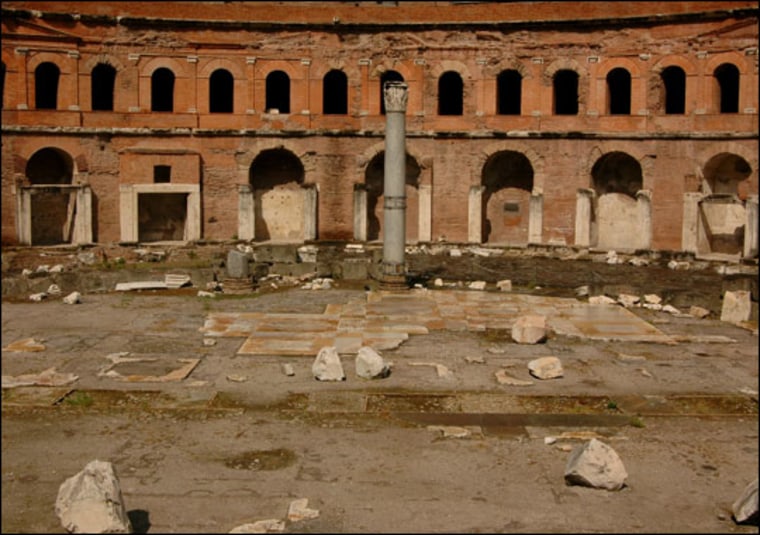Sandy ash produced by a volcano that erupted 456,000 years ago might have helped a huge ancient Roman complex survive intact for nearly 2,000 years despite three earthquakes, according to research presented last week in Rome.
X-ray analysis of a wall sample from the Trajan's Market ruins in Rome showed that the mortars used by ancient Romans contained stratlingite, a mineral known to strengthen modern cements.
"It is the first time that stratlingite is recognized in ancient mortars," Lucrezia Ungaro, the Trajan Forum archaeological chief, told Discovery News. "This is amazing, and shows the technical expertise of Roman builders."
Including a semicircular set of halls arranged on three levels, the "Market" complex is traditionally attributed to Apollodorus of Damascus, a Syrian architect who worked primarily for the Emperor Trajan. A gifted and innovative designer, Apollodorus is credited with most of the Imperial buildings, including the Forum of Trajan and Trajan's column.
Dating to 113 A.D., the enormous complex is no longer believed to be the world's first shopping mall, but rather a sort of "multi-functional center" with administrative buildings for Trajan, who ruled from 98 to 117 A.D.
Amazingly, the huge complex survived three devastating earthquakes — in 443 A.D., 1349 and 1703.
"Although the presence of the high-quality stratlinglite cements does not ensure protection from concrete cracking and failure from earthquake ground shaking, it shows the very well bonded nature of the wall concrete," Marie Jackson, of Northern Arizona University's department of history, told Discovery News.
Jackson co-authored the research with Barry Scheetz, professor of materials, civil and nuclear engineering at Pennsylvania State University, and volcanologist Fabrizio Marra of Italy's National Institute of Geophysics and Volcanology.
According to the researchers, the Roman builders took great care in selecting a mortar to hold walls together. They knew the diverse material properties of the rocks, and developed concretes that employed granular volcanic ash and chunks of various volcanic rocks.
To find the ash they turned to the material erupted from the Alban Hills volcano some 456,000 years ago. The area features three pozzolanic (cement-like) deposits, known as Pozzolane Rosse, Pozzolane Nere and Pozzolanelle.
"Of these, the type that makes a harsh, grating, rasping noise when rubbed vigorously in the hand is best," the ancient Roman writer and architect Vitruvius wrote in his De Architectura, a 10-volume treatise on architecture.
Indeed, when rubbed between the hands, Pozzolane Rosse, the volcanic ash identified in the Trajan Market sample, crackles.
The recipe for a robust concrete worked very well.
"The mortar was very well compacted; the ratio of lime, pozzolanic volcanic ash and water was carefully controlled," Jackson said.
More on Ancient Rome | Archaeology
